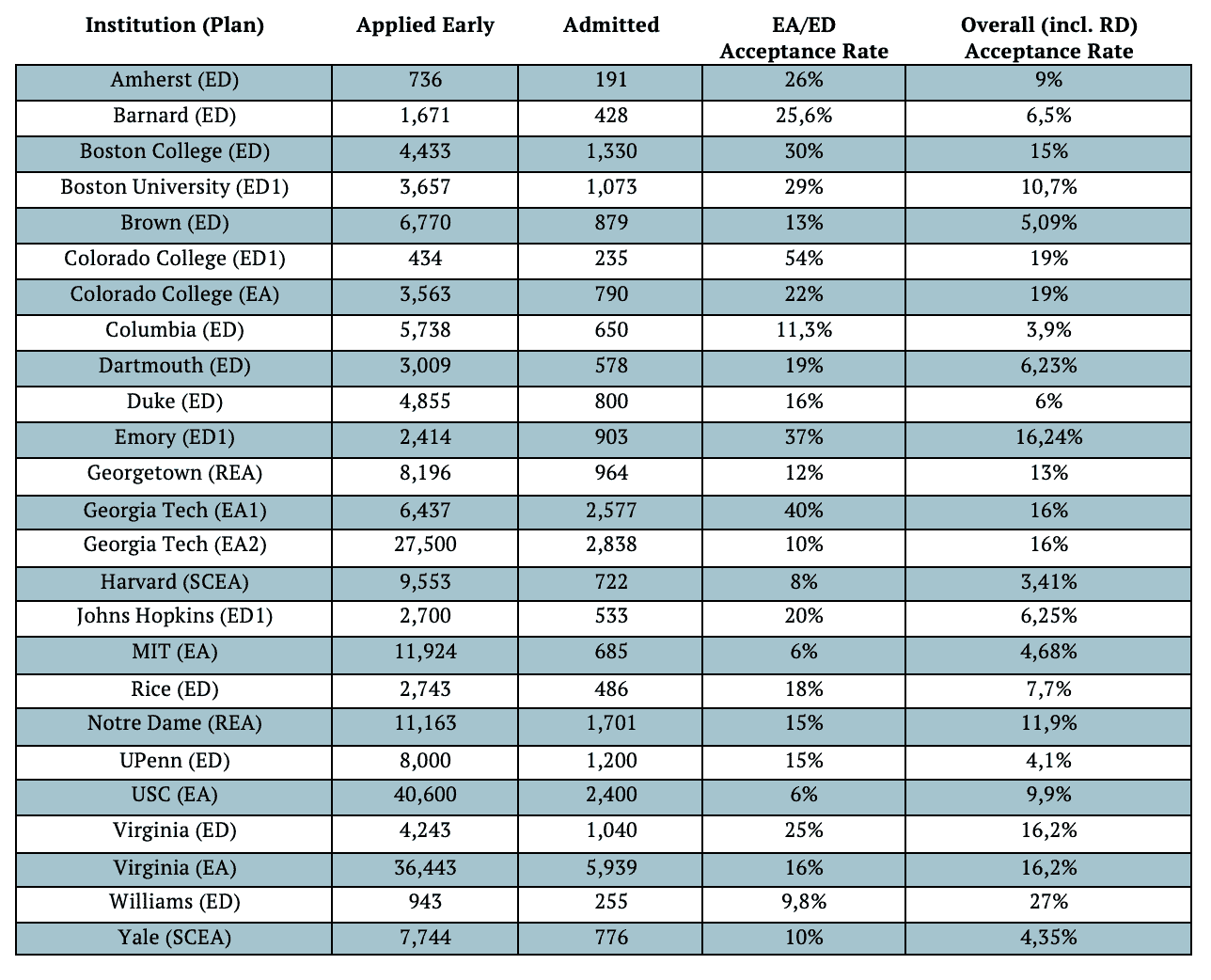Early Applications To United States Universities
University Applications


Greetings, ambitious students and dedicated parents! Are you eager to secure a spot at your dream college in the United States? Applying early can be the key to unlocking the door to your desired university. But what are the different types of early applications, and how can they improve your chances of admission? In this blog post, we’ll delve into the world of early applications, explore their advantages, and provide expert strategies to help you stand out. Let’s jump-start your journey to college success!
Submitting an early application can offer several advantages:

It is important to note that many more schools offer ED as an option, while few have an EA application. This is because colleges also have to plan carefully, to make sure they fill their entire incoming class. This is why the very top colleges can afford to host EA applications, since admitted students are unlikely to explore other options and withdraw their application in favor for another institution. This includes Harvard, Yale, Princeton, MIT and a few others.
We advise our students to prioritize EA over ED, since ED, while increasing one’s odds of acceptance in comparison to RD, carries with it several downsides, including the limiting of one’s choices and lesser room for negotiating financial aid – colleges are obliged to provide student’s with a package that would enable them to attend, but, since the candidate does not have the right to apply and receive competing offers from other institutions, this cannot be leveraged to push the package upwards.
To maximize your chances of success with early applications, follow these expert strategies:

Keep in mind that the recommendations you submit in early applications will likely be the same ones you bring to RD. Depending on your school, the same can be true for your grades and predicted grades. Carefully consider whether you’re likely to have a more robust application in these regards in November, or whether you’re likely to demonstrate an even stronger track record come January. If the latter is the case, skipping early applications might be an option.
More importantly, please note that the numbers, early vs. regular acceptance percentages, don’t tell the full story! Most often, international applicants, no matter how strong, get deferred (asked to reapply during RD), rather than rejected or accepted, from the top colleges during the early application rounds. This is because, while universities more or less know the sort of candidate pool they’re likely to see in the United States, they face much more volatility when it comes to countries like Lithuania, Latvia, Estonia, Germany, Austria and others – one given year they might get 50 top-notch candidates from a foreign country, and, in another, they might receive 20 mediocre ones. That’s why colleges want to wait and see – to compare the candidate against the talent pool from their country with full visibility during RD. Moreover, the candidate pool applying during early rounds is often very different from that applying during RD. While you certainly have way fewer applicants in the EA/ED rounds, they are usually the best candidates – students from elite private schools who’ve been groomed since 9th grade (or even earlier) to make it into the Ivy League and other such institutions. They already have the grades, extracurriculars, personal essays that they feel extremely confident about to put in an application a few months earlier than everyone else. Hence, you get a selection bias that should not be underestimated. RD is more forgiving in this regard.
In short, most of Atlas students were able to get into top universities in the United States during RD, and this also often gave them some room to push up their financial aid packages.
By understanding the advantages and types of early applications to US universities, you can enhance your chances of college admission success. With diligent research, strategic planning, and a compelling application, you’ll be well-prepared to embark on the exciting journey to your dream college. Carpe diem, future scholars!
Subscribe to our newsletter and get valuable advice on study programs, funding opportunities and much more!